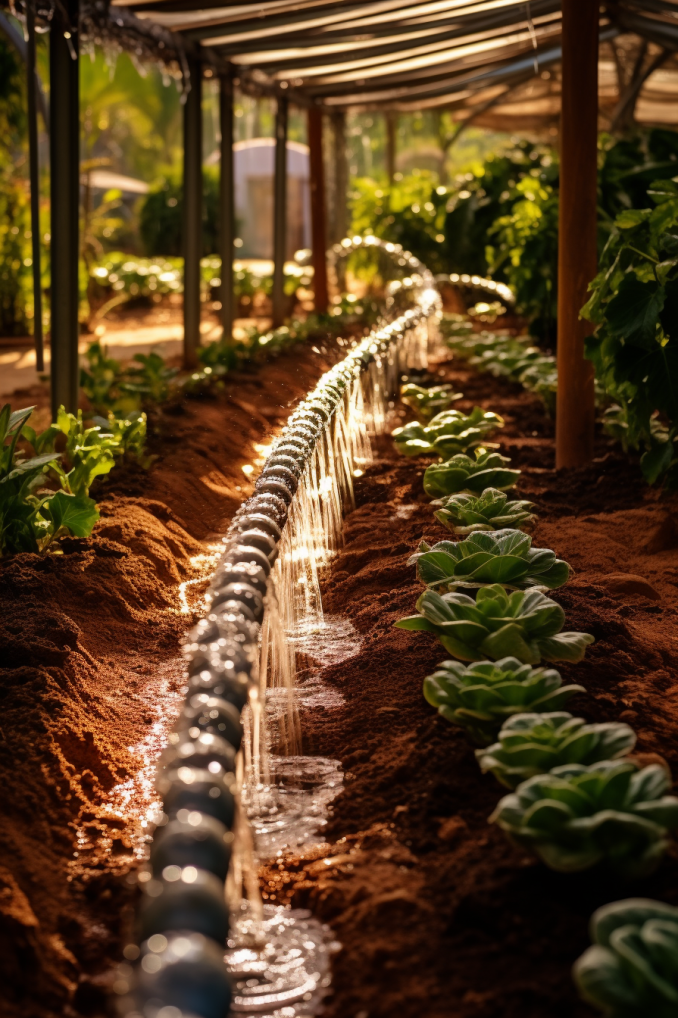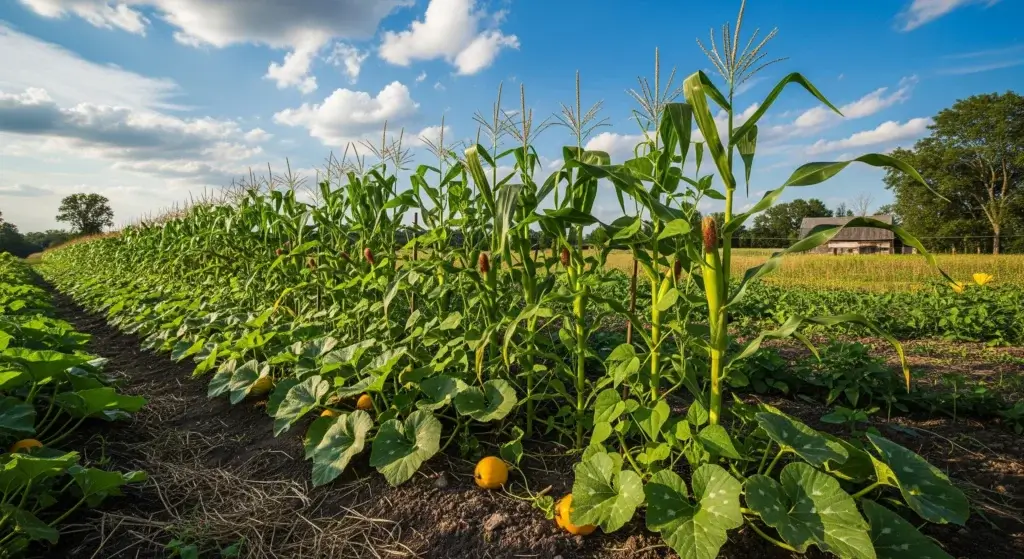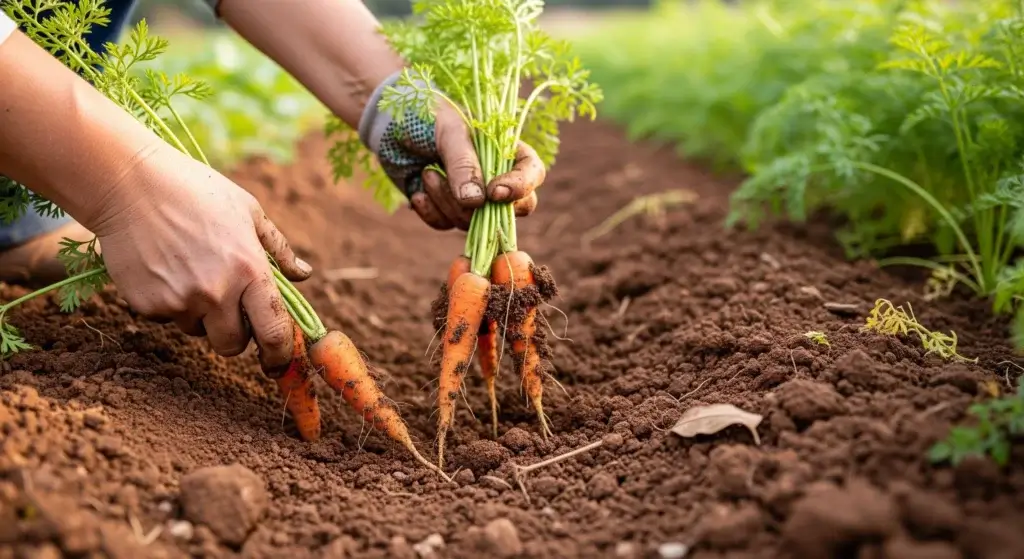
In gardening and farming, water is precious, and using it wisely matters. Drip irrigation is a game-changer here, and the unsung heroes are the emitters.
These small devices deliver water right to plant roots, making watering efficient.
Emitters control water flow precisely, avoiding wastage compared to traditional methods.
They’re the crucial link between water and plants, ensuring targeted, efficient watering that conserves resources and promotes healthier growth.
Purpose of Emitters in Drip Irrigation
Emitters stand as the backbone of drip irrigation systems, playing a pivotal role in their efficiency.
Their primary function is to regulate the flow of water with precision, delivering it directly to the plants.
Here’s a breakdown of why these emitters are indispensable:
- Read also: Mastering the Art of Drip Irrigation for Tomatoes
- Read also: How to Lower pH in Soil for a Thriving Garden
Flow control
Emitters excel in managing the flow of water, ensuring it moves at the right pace and volume.
This meticulous control avoids the pitfalls of wastage commonly seen in traditional sprinkler systems, where water often evaporates or runs off, missing the intended target.
Precise distribution
Their key strength lies in their ability to distribute water exactly where it’s needed – the root zone.
Unlike conventional methods that blanket an entire area with water, emitters work diligently to supply water directly to the plant roots, optimizing absorption and reducing waste.
Efficiency
By delivering water straight to the root zone, emitters significantly enhance the efficiency of irrigation.
This targeted approach means plants receive the exact amount of water they need, fostering healthier growth while conserving resources.
Waste Reduction
Traditional sprinkler systems often lead to water wastage due to inefficient distribution.
Emitters combat this issue by minimizing evaporation and runoff, ensuring a higher percentage of water reaches the plants, thus utilizing water more effectively.
In essence, emitters act as precision engineers in the irrigation process, ensuring that every drop of water counts.
Their meticulous control and targeted distribution revolutionize watering practices, making drip irrigation a frontrunner in resource-efficient gardening and agriculture.

Importance of Emitters in Drip Irrigation Systems
Let’s delve deeper into how emitters work their magic in conserving water and promoting plant growth by providing a detailed breakdown:
Precision in water delivery
Traditional watering methods tend to oversaturate the entire garden, leading to water wastage.
Emitters step in with a targeted approach, delivering water precisely where it’s needed – the roots.
By doing so, they eliminate excess watering, ensuring each plant receives the optimal amount of water required for healthy growth.
Slow, controlled flow
Emitters are designed to release water at a slow and steady pace.
This deliberate flow prevents rapid runoff or evaporation, allowing the soil around the plant’s roots to absorb water effectively.
This slow release also prevents soil erosion and nutrient loss, fostering a healthier environment for plant roots to thrive.
Reduction in wastage
By directly supplying water to the root zone, emitters drastically reduce water wastage.
Unlike overhead sprinklers that can lose water to evaporation or runoff, emitters keep wastage to a minimum, ensuring maximum utilization of the water provided.
Optimizing plant health
The targeted delivery of water by emitters promotes optimal plant health.
When plants receive water directly at the roots, they absorb nutrients more efficiently, leading to stronger, more resilient plants.
This targeted approach also minimizes weed growth since the surrounding soil remains relatively dry.
Conservation efforts
Emitters contribute significantly to water conservation efforts.
Their ability to deliver water precisely to the plants reduces overall water usage, making them a sustainable choice for eco-conscious gardeners and farmers.
Types of Drip Irrigation Emitters

Let’s delve into a detailed explanation of the various types of drip irrigation emitters:
Inline drippers (On-line Drippers)
These emitters function like dedicated workers in the world of drip irrigation.
They are installed along the tubing or inserted into lateral pipes, releasing water uniformly.
They are available in diverse types, with some capable of adjusting to different pressures to maintain consistent flow rates.
On-line drippers, the most common type, emit a slow and steady stream of water.
They come in various flow rates, from 0.5 gallons per hour (gph) to 20 gph, making them perfect for individual plants and shrubs.
Micro sprayers
Visualize these emitters as gentle misters that emit a fine spray of water, covering a broader area.
They’re especially beneficial for delicate plants or areas that require more widespread watering.
Their fine misting action ensures an even distribution of water, catering to the needs of various plant sizes.
Bubblers
These emitters release water in a bubbly manner, making them the go-to specialists for larger plants or trees requiring deeper watering.
Bubblers are designed to deliver water deeply into the soil, addressing the thirstiest roots and supporting robust root development.
Emitter tubing
Envision tubing that comes equipped with built-in emitters.
This tubing is incredibly convenient for evenly distributing water along its length, making it an ideal choice for hedges, flower beds, or rows of vegetables.
It ensures consistent hydration throughout the designated area without the hassle of individual emitter placement.
Adjustable emitters
These emitters offer versatility by allowing users to modify the flow of water.
This customization capability caters to the specific requirements of different plants within the same system, ensuring tailored watering to suit varying plant needs.
Foggers
Foggers emit a very fine mist that covers a large area.
They serve purposes beyond just watering, such as cooling plants or creating a humid environment.
This type of emitter is particularly beneficial for maintaining ideal conditions for certain plants or in specialized environments.
Choosing the Right Drip Irrigation Emitter

Here’s a more detailed breakdown of choosing the right drip irrigation emitter:
Plant type
Different plants have varying water requirements.
Some prefer deep, infrequent watering, while others thrive with more frequent, shallow watering.
Consider the specific water needs of your plants—whether they are vegetables, shrubs, trees, or flowers—to match them with an appropriate emitter type.
Soil type
Soil composition plays a crucial role in determining water distribution.
Sandy soil tends to drain water quickly, whereas clay soil retains water for longer periods.
Understanding your soil type helps in selecting emitters that suit the soil’s water retention characteristics, ensuring efficient water delivery to plant roots.
Climate
Weather patterns influence how often and how much water your plants need.
Hotter climates might necessitate more frequent watering, while cooler climates might require less.
Emitters that offer flexibility in adjusting water flow can accommodate varying climatic conditions effectively.
Water pressure
The water pressure in your area affects the performance of drip irrigation emitters.
Some emitters work better under higher pressures, while others are designed for low-pressure systems.
Matching the emitter type to your water pressure ensures optimal functioning and consistent water delivery.
Plant placement
Consider the layout of your garden or farm.
Plants in different areas may have unique requirements.
For example, those situated on slopes might benefit from emitters that control water flow to prevent runoff, while plants in shaded areas may require less water compared to those in direct sunlight.
Emphasis on efficiency
Efficiency is key in selecting emitters.
Look for options that minimize water wastage due to evaporation or runoff.
Emitters that deliver water directly to the root zone maximize efficiency by ensuring the plants get the water they need without excess loss.
Maintenance and longevity
Consider the maintenance requirements of different emitter types.
Some may need more frequent cleaning or replacement, impacting long-term costs and efforts. Choose emitters known for durability and easy maintenance to ensure consistent performance over time.
- Read also: DIY Potted Plant Watering System Guide
- Read also: Aloe Plant Watering Care
Conclusion
Drip irrigation emitters play a crucial role in efficient plant watering.
They come in various types, from steady inline drippers to gentle misters like micro sprayers and deep-soak specialists like bubblers.
Each suits different plant needs and watering patterns.
Choosing the right emitter involves considering factors like plant type, soil, climate, and water pressure.
By matching emitters to specific needs, you optimize water usage and promote healthier plant growth.
These seemingly small emitters revolutionize watering practices, making it eco-friendly and efficient.
Selecting the right one isn’t just about conserving water; it’s about nurturing vibrant, thriving plants.
Ultimately, it’s a commitment to a greener, more sustainable environment.
FAQs
It depends on factors like plant type, weather, and soil. Generally, watering for shorter durations more frequently is better than infrequent deep watering.
Absolutely! Drip irrigation kits are available for DIY installation. Just follow the instructions carefully, and you’ll have an efficient watering system in no time.
Most emitters are designed to last, but regular maintenance ensures longevity. Clean them periodically and replace them if needed to maintain their efficiency.



